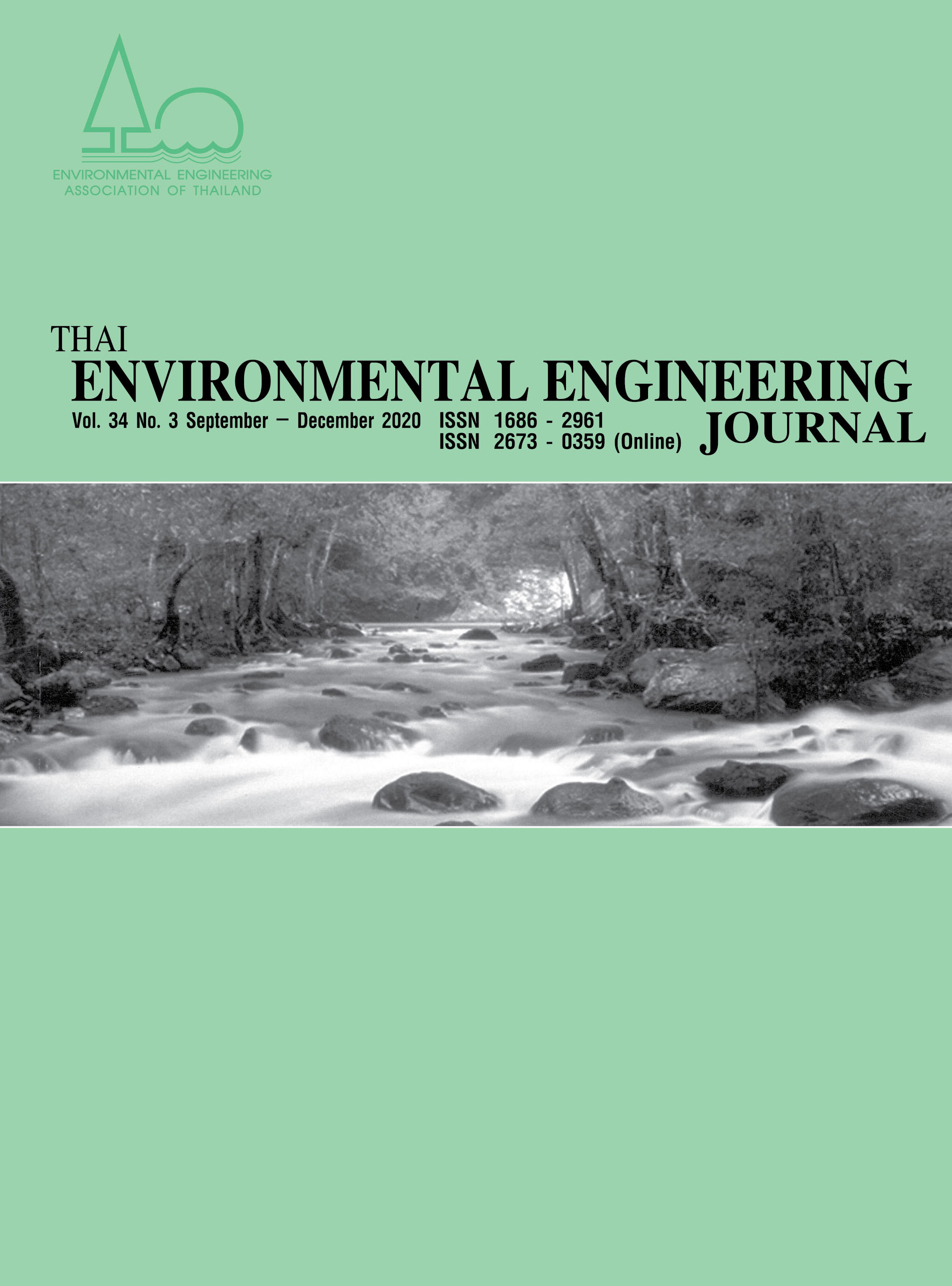Biodegradation of PAHs by The Mixed Cultures of Diesel Degradation Bacteria
Main Article Content
Abstract
Polycyclic aromatic hydrocarbons or polyaromatic hydrocarbons (PAHs) is an organic compound in hydrocarbon group. This structure is two or more aromatic rings without heteroatoms. The most abundant groups of aromatic compounds occurring in diesel fuels are naphthalene. Three strains of diesel-degrading bacteria including Achromobacter insolitus, Candida spp and Xanthobactor polyaromatici yorans was proved as high capability to degrade diesel. Thus, this study was aims to determine the optimal condition for growth up of diesel-degrading bacteria and diesel degradation efficiency. The experiment was conduct in batch experiment with the varied ratio of synthetic wastewater as nutrient and diesel concentration with surfactants (N:D) at 100:0, 80:20, 60:40, 40:60, 20:80 and 0:100. Then the optimal ratio of N:D was used to determine the effect of initial naphthalene concentration on naphthalene degradation. The different initial concentration of naphthalene was varied in the range of 0 to 100 mg/L. The results showed that the highest percent COD removal (100%) was found at N:D ratio 60:40 and 0:100 followed by N:D ratio 40:60 at 96.7% and N:D ratio 80:20 and 20:80 at 97.4%, respectively. The different of nutrient added was affected the growth of biomass. The highest biomass yield was found in N:D ratio 20:80. The growth of biomass depended not only diesel but also glucose in nutrient. Glucose play as a cometabolism for growth up bacteria. The initial concentration naphthalene was affected the growing of biomass and the efficiency of naphthalene degradation. The highest naphthalene degradation efficiency (99.8%) was found at initial napthalene concentration at 20 mg/L.
Article Details
References
United States Environmental Protection Agency. Polycyclic Aromatic Hydrocarbons (PAHs). Guidance for Reporting Toxic Chemicals: Polycyclic Aromatic Compounds Category, EPA 260-B-01-03, 2008.
Wattayakorn, G. 2012. Petroleum pollution in the Gulf of Thailand: A historical review. Coastal Marine Science, 35(1).
Paul, J. T., Michael, M. R., Robin, D. P., Jim, B. 1996. Diesel combustion of an alkylated polycyclic aromatic hydrocarbon. Fuel, 75(6).
Hawai’i Department of Health, Office of Hazard Evaluation and Emergency Response. 2018. Petroleum Fuels. http://www.hawaiidoh.org/tgm-content/0903a.aspx?f=T (accessed 3 March 2018).
Singhyakaew, S. 2015. Phosphorus Recovery from Aerobic Membrane Bioreactor Effluent Using Purolite A500 Resin and Chemical Precipitation. Master Thesis of Chia Nan University of Pharmacy and Science.
Britton, L. N. 1984. Microbial Degradation of Aliphatic Hydrocarbons. Microbial Degradation of Organic Compounds.
Shallu, S., Hardik, P. and Jaroli, D. P. 2014. Factors Affecting the Rate of Biodegradation of Polyaromatic Hydrocarbons. International Journal of Pure & Applied Bioscience. 2(3).
Zhong, Y., Luan, T., Wang, X., Lan, C., Tam, N. F. 2007. Influence of growth medium on cometabolic degradation of polycyclic aromatic hydrocarbons by sphingomonas sp. strain PheB4. Microbial Biotechnology. 75
Banu, R. J., Uan, D. K. and Yoem, I. T. 2009. Nutrient removal in an A20-MBR reactor with sludge reduction. Bioresource Technology. 100(16). 3820-3824.
Thai government gazette. 2018. Notification of the Ministry of Industry the Government Gazette. www.ratchakitcha.soc.go.th › DATA › PDF › 4.PDF (accessed 16 May 2018).


